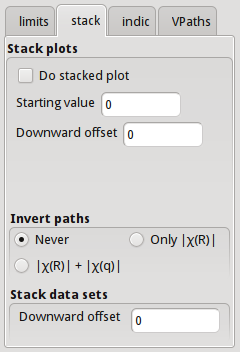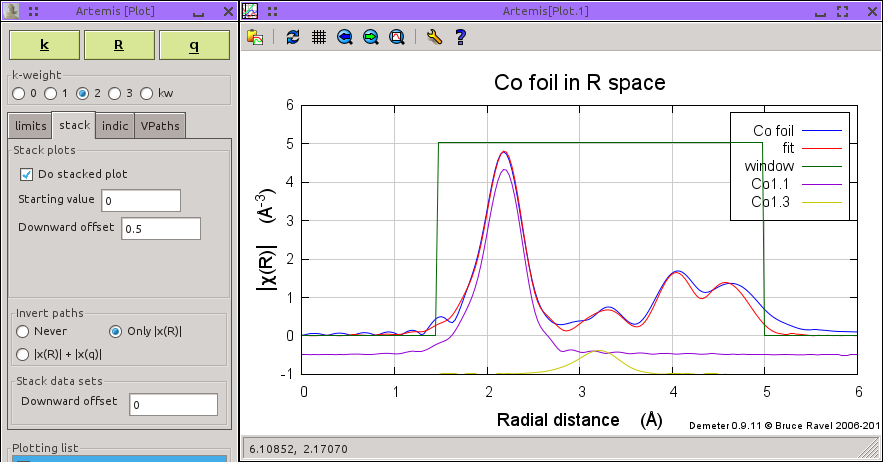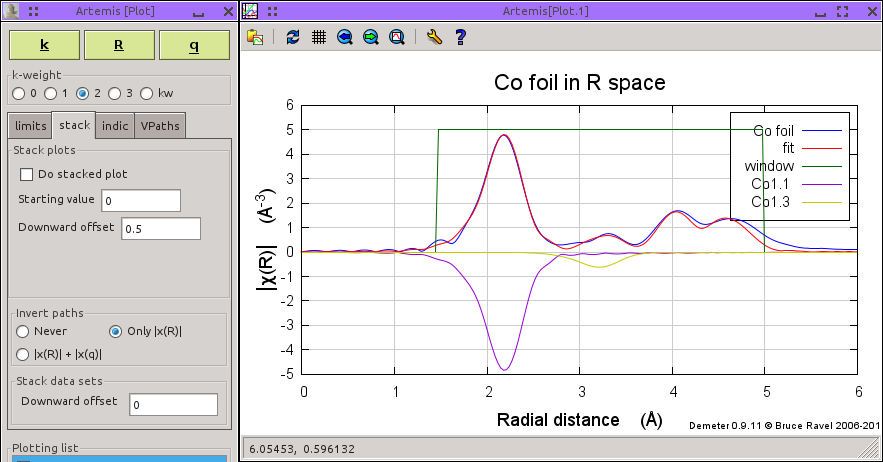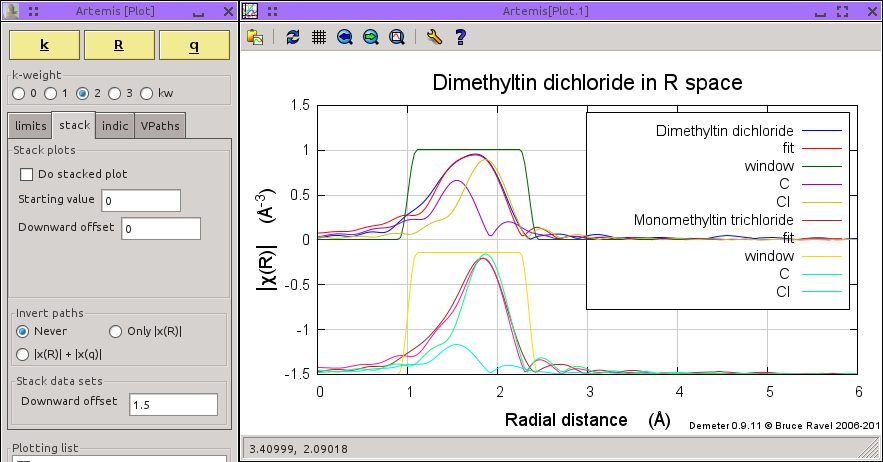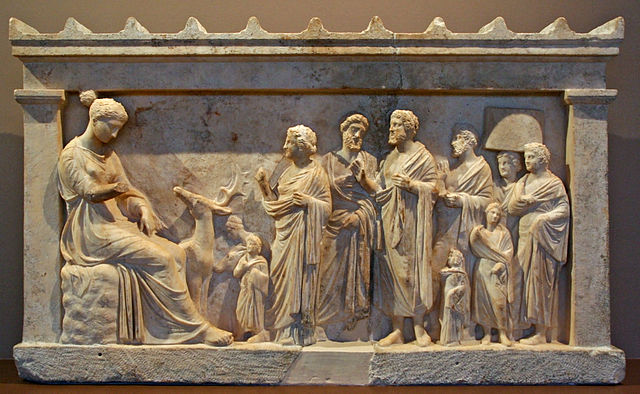8.2. Stacked plots¶
With a large number of items in the plotting list, a plot may become quite hard to understand due to the large number of overlapping traces.
The stack tab holds controls for providing vertical offset between traces in a plot. The top set of controls works very similarly to the stacking feature in ATHENA. When the check button is clicked on, paths will be offset vertically as indicated by the the two values. The initial value is the offset applied to the data. All parts of the data (fit, window, etc) will also be plotrted with that offset. The second value is a vertical displacement between successive paths. Note that the displacement is downward – that is, a value of +2 means to displace each path by -2 on the y-axis. In this way, traces appear in the same top-to-bottom order as the plot legend when a positive value is chosen.
The second group of controls is used to multiply paths by -1 before plotting. This results in the data pointing up and the individual paths pointing down. This feature is turned off when the check button for a stacked plot is clicked on.
The last control is used to specify a vertical offset between data sets when plotting more than one data set from a multiple data set fit. Note that this stacking parameter and the individual data set stacking parameters will each provide some vertical offset, requiring careful consideration for an attractive plot.
8.2.1. Stacked plot¶
Here is an example of a stacked plot. Shown are Co foil data, the fit function, and the fitting window. Offset downward are the paths from the first two coordination shells as evaluated in the fit. Note that the size of an appropriate offset depends on the k-weighting and on the space the plot is made it. ARTEMIS does not attempt to compute a sensible value – that is up to you.
8.2.2. Inverted plot¶
Here we see a plot with inversion. This is the same fit as in the stacked plot above, except that the first two coordination shells as evaluated in the fit are pointing downward.
8.2.3. Data stack plot¶
Finally, here is an example of stacked data sets. This is a multiple data set fit to dimethytin dichloride and monomethyltin trichloride. The visualize both parts of this fit, it is convenient offset the monomethyltin trichloride data and paths downward by enough to completely separate the traces associated with each data set. Again, the value of the offset depends on the k-weighting and on the sapce in which the plot is made.
DEMETER is copyright © 2009-2016 Bruce Ravel – This document is copyright © 2016 Bruce Ravel
This document is licensed under The Creative Commons Attribution-ShareAlike License.
If DEMETER and this document are useful to you, please consider supporting The Creative Commons.
